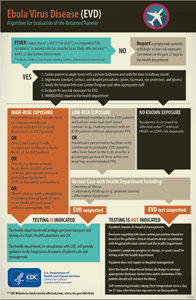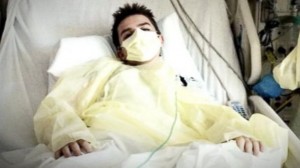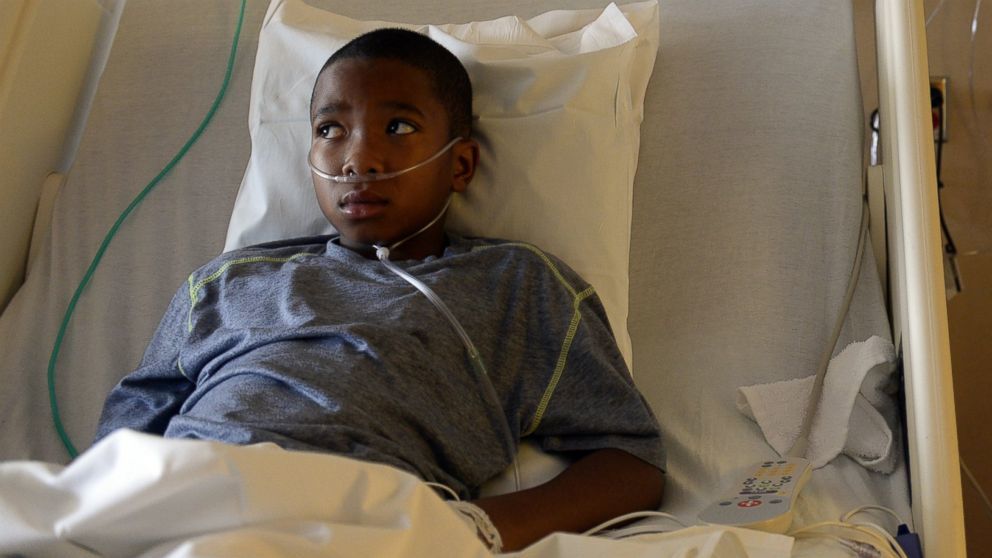Tag Archives for " CDC Center for Disease Control "

Top 14 Healthcare Stories of 2014
1) Healthcare.gov Gets Clean Bill Of Health… Kind Of.
Few health stories in 2013 captured as much news coverage and attention than the launch of the Federal Health Exchange website and its rocky beginnings. Many were excited by the prospect of lower health insurance costs, promised by the administration, and flocked to the website to sign up. But, due to technical difficulties, hundreds of thousands of customers were left out in the cold and unable to enroll in coverage. Insurance companies reported very few applications received even months after the site’s launch.
By November, 2014, the problems that plagued the site earlier had seemed to be fixed with the officials announcing 100,000 application submissions on the first day of open enrollment. But, higher than expected premium cost and lower coverage for consumers — combined with complicated and costly systems for hospitals — highlights just how much further ‘Obamacare’ has to go before it will be seen as a success.
2) The Ebola Outbreak: Death in Africa
While Ebola didn’t start in 2014, it sure came on like a lion then. The Centers for Disease Control and Prevention reported that, as of January 6, 2015, a total of 21,007 cases were reported, and nearly 9,000 deaths were attributed to the disease.
3) The Ebola Outbreak: Coming to America
The inevitable happened which captured headlines around the country, igniting a firestorm, sending people running for surgical masks and hazmat suites to protect themselves from the disease. But, was it much-ado-about-nothing? Within a few weeks, everything seemed back to normal again.
4) Enterovirus Grips The Nation
Enterovirus D68 (EV-D68) took the U.S. by surprise in 2014, with a confirmed total of 1,153 people within 49 states and the District of Columbia affected.
5) E-Cigarette Use Soars
Amid the ongoing debate whether e-cigarettes are a less dangerous alternative to smoking, the use of these devices soared in 2014. A U.S. National Institutes of Health survey found that more than double number of 10th graders are likely to have tried e-cigarettes, to those who will have tried traditional cigarettes.
6) War In The Lunchroom: Kids vs Healthy Eating
No matter where you land on the issue of healthy meals in public schools one thing is for sure, the kids weren’t happy in 2014. Championed by First Lady, Michelle Obama, federal regulations on what constitutes a healthy meal were met with opposition from the recipients of those lunches. Kids around the country took to social media, tweeting photos of their meals along with the trending hashtag #ThanksMichelleObama.
7) Right To Die
When most think about a patient seeking assisted suicide we picture a face of many more years than that of Brittany Maynard’s, an attractive 29-year old woman from California. Brittany suffered from cancer and moved to Oregon in 2014 to take advantage of the state’s “Death With Dignity Act” — at the same time capturing the nations attention to the serious subject of an individuals right to die.
8) Vaccines…pssh! Who Needs ‘Em? We Do, Apparently.
A small but growing number of parents who have shun vaccinating their children, based on beliefs that vaccines cause conditions like Autism, are unwittingly playing a role in the resurgence of once-rare childhood diseases. In 2014, California suffered its worst outbreak of pertussis, also know as ‘whooping cough’, in 70 years. CDC statistics also show that U.S. measles cases have reached a 20-year high.
9) Pot gets legalized
Although the legalization of marijuana in Washington state, Oregon, and Colorado was for recreational use, I have added it to this list for the social significance it points to. Namely, the changing tide in public sentiment toward pot and its use. Many states have already, up-till-now, had laws for its legal medical use. However, in many cases, the wider view of pot as a ‘bad thing’ stymied its spread as a potential option for those seeking a serious alternative to pharmaceuticals. This recent wave of states legalizing its use could signal a change in opinion, and open doors for patients looking for other options.
10) America Looses An Icon
America, and the world, was shocked when it learned that one of its beloved stars had committed suicide. Robin Williams took his own life after years of struggling with depression. After his death, Williams’ wife revealed he had also recently been diagnosed with Parkinson’s disease, and an autopsy revealed his brain showed signs of Lewd Body Disease, a form of dementia that can cause hallucinations and concentration problems.
Although it’s not confirmed these conditions played a role in William’s suicide, his death has shed light on several frequently misdiagnosed or understood disorders.
11) “I’ll have the small ‘650 calorie’ popcorn please.”
Restaurants and concession stands must now post calorie counts on their menus. Under newly finalized FDA rules, chain restaurants, vending machines, and theatre and amusement park snacks must post their calorie counts. Personally, I don’t want to know my ‘elephant ear’ is 1,500 calories… I just want to shove it in my face while spinning 800 rpm’s on the tilt-a-whirl.
I want to end this list on a high note, because, while there were some really terrible things that happened in 2014, there were some really heart-warming and amazing things that happened as well.
12) Grow-Your-Own Ears
By first depositing living cells encapsulated in a hydrogel with a 3D printer, scientists at Weill Cornell Medical College were able to construct and grow the first artificial ears that look and act like real ones. Using human cells, specifically from the same patient, reduces any possibility of rejection.
13) Congratulations Nurses!
Nurses once again topped the list of ‘professions with the highest ethical standards’ in Gallup’s 2014 survey on honesty and ethics. Way to go nurses… Whoop, whoop!
14) The Six-million Dollar Men: Bionic Eyes and Arms
A North Carolina man became the first patient in state history to receive a “bionic eye”, Argus II retinal prostheses, allowing him to see light for the first time in 30 years. Then, in the later half of the year, a double arm amputee was fitted with robotic arms that he was able to control… wait for it, with his mind! How freakin’ cool is that?
So, here is to 2015, and to the possibilities it holds. It will undoubtedly come with its own share of trials and tribulations, just as 2014 did. But, will surely be filled with amazing new health technologies to make life all a little easier as well.
BREAKING NEWS: CDC ISSUES EBOLA UPDATE IN RESPONSE TO DALLAS ER HANDLING
Yahoo News reports today, that in response to the Dallas Hospital ER handling of the recently confirmed Ebola virus case, the CDC was prompted to issue a nationwide alert to all hospitals updating them of how to appropriately respond to possible cases of the deadly disease.
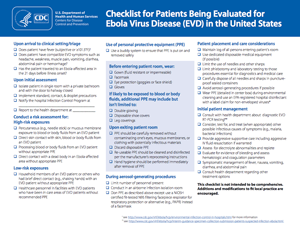 The Ebola Virus Disease (EVD) Algorithm for Evaluation of the Returned Traveler and the Checklist for Patients Being Evaluated for Ebola Virus Disease (EVD) in the United States are located on the CDC.gov website, and are to help hospital staff identify and evaluate returning travelers for the EVD.
The Ebola Virus Disease (EVD) Algorithm for Evaluation of the Returned Traveler and the Checklist for Patients Being Evaluated for Ebola Virus Disease (EVD) in the United States are located on the CDC.gov website, and are to help hospital staff identify and evaluate returning travelers for the EVD.
If you have not familiarized yourself with the signs and proper handling of patients who may have the EVD please follow this link to the Centers for Disease Control and Prevention website here: Ebola Update.
Yahoo News Coverage
Temporary Paralysis and Other Things You Need to Know About Enterovirus
————————————————————————————————————————–
There is still a mystery surrounding Enterovirus cases spreading around the country. Now the CDC is investigating possible connections between the virus and temporary paralysis. Although its symptoms are similar to the common cold, its rapid progression and severity makes it very different — with many cases ending up in Intensive Care. Hundreds are hospitalized in 11 states, at higher risk are children with asthma.
Here are some important things you should know:
• Highly contagious, spreadable by cough or sneeze, and also can live on surfaces. But full knowledge of how is spreads is unknown due to lack of scientific studies on the virus.
• Starts like common cold; Runny Nose, Coughing, sneezing and fever
• Progresses rapidly; difficulty breathing, possible loss of consciousness (look for wheezing, shortness of breath or difficulty speaking)
Apparently this isn’t the first case of an outbreak of Enterovirus (EV-D68). According to a 2011 CDC report, from 2008 to 2010 there were clusters of Acute Respiratory Illness associated with EV-D68 across multiple continents including Asia, Europe and the United States. While it’s not the first time however, health officials are scratching their heads as to why it has reemerged… and with such voracity.
Particularly alarming is the lack of specific treatment for the virus and its, now possible, connection to acute onset of focal limb weakness — or temporary paralysis. Instead, health officials are tasked with treating the symptoms of the infection, often requiring hospitalization.
For the most current information on the virus, and to find out what is being done about it, visit the CDC website.
The CDC has a specific link for Healthcare Professionals on Evaluating, Reporting, Testing and Infection Control Recommendations here.
Ebola Is Here — CDC Confirms first Ebola Case Diagnosed in US
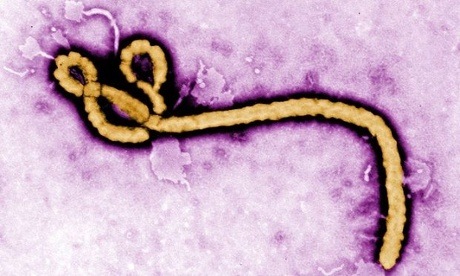
The Ebola virus. Photograph: Frederick Murpy/CDC/EPA Source: http://www.theguardian.com
CNBC is reporting that the Centers for Disease Control (CDC) announced on Tuesday the first officially diagnosed domestic case of the Ebola virus within the US.
Officials say, the yet-as identified patient is under “strict isolation” in Dallas, Texas, apparently confirming a statement issued on Monday by the Texas Health Presbyterian Hospital of Dallas.
Monday night Texas Health Presbyterian Hospital in Dallas released the following statement:
“Texas Health Presbyterian Hospital Dallas has admitted a patient into strict isolation to be evaluated for potential Ebola Virus Disease (EVD) based on the patient’s symptoms and recent travel history. The hospital is following all Centers for Disease Control and Texas Department of Heath recommendations to ensure the safety of patients, hospital staff, volunteers, physicians and visitors. The CDC anticipates preliminary results tomorrow (Wednesday).”
In a press conference, CDC Director Tom Frieden said the patient in question had been traveling in Liberia, where he may have contracted the disease.
“It is certainly possible that someone who had contact with this individual…could develop Ebola in the coming weeks,” Frieden said, but added that “there is no doubt in my mind that we will stop it here.”
According to the CDC website, “The 2014 Ebola outbreak is the largest in history and the first Ebola epidemic the world has ever known.” The virus is know to be transmitted by contact with blood or body fluids (including but not limited to urine, saliva, feces, vomit, and semen) of a person who is sick with Ebola. Objects, such as needles and syringes, that have been contaminated and animals that are infected are also know means of transmitting the virus. At this time it is not believed that Ebola is transmitted through the air or by water.
There is currently no known treatment or cure for the virus.
Complete information on the Ebola Virus can be found on the CDC website at CDC.gov.
The CNBC story can be found here.
Dallas CBS News Report.
Could Feds enact emergency measures?
Special Center for Disease Control Health Alert Network Advisory — Link Between Enterovirus 68 and Paralysis
Occasionally, we will have special announcements of current health issues that we feel everyone should know about, and we do our best to deliver as much information we can about them. In this case, it is the alarming rise in cases of Enterovirus nation-wide, and concerns both health officials and the Centers for Disease Control (CDC) have about this mysterious illness. Over the next few weeks we will be following this developing story and provide links to as much information on its spread, known symptoms, and what health and CDC officials recommend the public can do to guard against it.
On September 26, 2014, the CDC issued an Official Health Alert Network (HAN) Advisory, Acute Neurologic Illness with Focal Limb Weakness of Unknown Etiology in Children. The HAN’s purpose is to spread awareness of the neurologic syndrome and to help determine its geographic spread.
Currently, the CDC is investigating nine cases of the acute neurologic illness among pediatric patients, among the ages of 1-18 years.
According to the report, “Common features included acute focal limb weakness and specific findings on magnetic resonance imaging (MRI) of the spinal cord consisting of non-enhancing lesions largely restricted to the gray matter. In most cases, these lesions spanned more than one level of the spinal cord. Some also had acute cranial nerve dysfunction with correlating non-enhancing brainstem lesions on MRI. None of the children experienced altered mental status or seizures. None had any cortical, subcortical, basal ganglia, or thalamic lesions on MRI. Most children reported a febrile respiratory illness in the two weeks preceding development of neurologic symptoms. In most cases, cerebrospinal fluid (CSF) analyses demonstrated mild-moderate pleocytosis (increased cell count in the CSF) consistent with an inflammatory or infectious process. CSF testing to date has been negative for West Nile virus and enteroviruses, including poliovirus.”
The United States is currently experiencing a nationwide outbreak of EV-D68 associated with severe respiratory disease.
The CDC lists a number of recommendations and provides contact information to report suspected cases:
“Recommendations
- Patients who meet the following case definition should be reported to state and local health departments:
Patients ≤21 years of age with
- Acute onset of focal limb weakness occurring on or after August 1, 2014;
AND
- An MRI showing a spinal cord lesion largely restricted to gray matter.
- State and local health departments should report patients meeting the case definition to CDC using a brief patient summary form (www.cdc.gov/non-polio-enterovirus/investigation/). State health departments should send completed summary forms to CDC by email at limbweakness@cdc.gov.
- Providers treating patients meeting the above case definition should consult with their local and state health department for laboratory testing of stool, respiratory, and cerebrospinal fluid specimens for enteroviruses, West Nile virus, and other known infectious etiologies.
- Health departments may contact CDC for further laboratory and epidemiologic support by phone through the CDC Emergency Operations Center (770-488-7100), or by email at limbweakness@cdc.gov. Confirmation of the presence of EV-D68 currently requires typing by molecular sequencing.”

